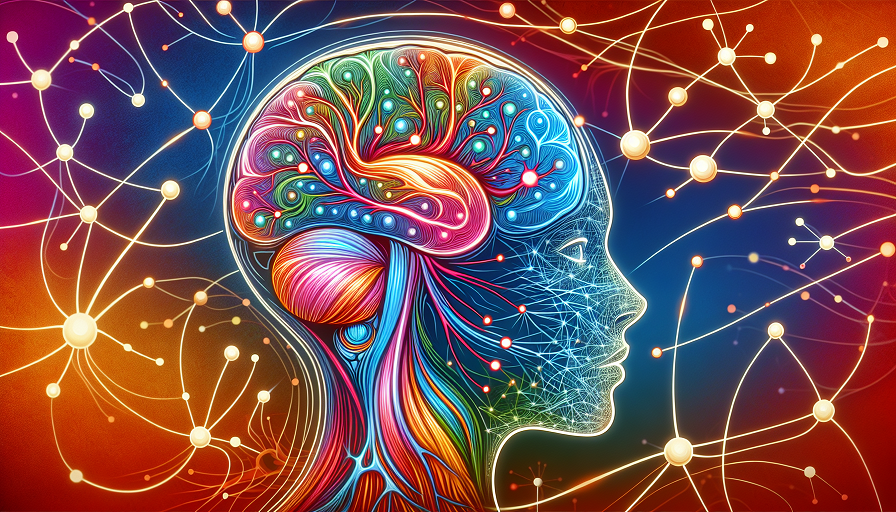
The human brain is nothing short of extraordinary. Its ability to adapt, reorganize, and forge new connections — a phenomenon known as neuroplasticity — allows us to overcome challenges, recover from injuries, and master new skills. While scientific research has confirmed the brain’s capacity to rewire itself, real-life success stories provide tangible proof of neuroplasticity in action. These stories highlight how individuals have harnessed the power of their adaptable brains to achieve remarkable recoveries and transformations. Here we look at inspiring examples of neuroplasticity, showcasing the resilience and potential of the human mind.
Contents
Understanding Neuroplasticity
Neuroplasticity is the brain’s ability to reorganize itself by forming new neural connections and pathways. This adaptability is the foundation of learning, memory, and recovery. Neuroplasticity can occur in response to various stimuli, including:
- Injury: The brain compensates for damaged areas by reorganizing functions to healthy regions.
- Learning: New experiences and skills stimulate the growth of neural pathways.
- Habit Formation: Repeated behaviors strengthen specific connections, while unused pathways are pruned away.
While neuroplasticity is a natural process, it requires effort and consistency to achieve significant changes, particularly after trauma or injury. The following success stories demonstrate how individuals have leveraged neuroplasticity to overcome adversity and achieve incredible feats.
Real-Life Stories of Neuroplasticity in Action
The Recovery of Gabby Giffords
In 2011, former U.S. Congresswoman Gabby Giffords survived a traumatic brain injury after being shot in the head during an assassination attempt. The bullet caused significant damage to the left hemisphere of her brain, which controls speech and motor functions on the right side of the body. Her prognosis was uncertain, but Giffords’ recovery became a testament to the power of neuroplasticity.
Through intensive therapy, including speech, occupational, and physical exercises, Giffords gradually regained her ability to walk, speak, and perform everyday tasks. Her brain rewired itself, enabling undamaged regions to compensate for the injured areas. Today, Giffords advocates for gun safety and continues to inspire millions with her resilience and determination.
Daniel Kish: The Real-Life Batman
Daniel Kish, often referred to as the “real-life Batman,” lost his eyesight as a baby due to retinal cancer. Despite this, he developed an extraordinary ability to navigate his environment using echolocation — the same technique used by bats and dolphins. Kish clicks his tongue and listens to the echoes that bounce off nearby objects, allowing him to “see” with sound.
Brain imaging studies have shown that Kish’s visual cortex, typically dormant in blind individuals, is activated during echolocation. This remarkable adaptation demonstrates how neuroplasticity enables the brain to repurpose unused areas for new functions. Today, Kish teaches echolocation to other visually impaired individuals, proving that the brain’s potential is limitless.
The Triumph of Dr. Jill Bolte Taylor
Neuroscientist Dr. Jill Bolte Taylor experienced a massive stroke in 1996 that damaged the left hemisphere of her brain, affecting her ability to speak, read, and think logically. Despite the severity of her condition, Taylor embarked on an eight-year journey of recovery, guided by her understanding of neuroplasticity.
Through consistent therapy and self-directed exercises, Taylor regained her cognitive and motor abilities. She later wrote a bestselling memoir, My Stroke of Insight, sharing her journey and offering hope to others facing similar challenges. Her recovery exemplifies how the brain’s adaptability can overcome even the most daunting obstacles.
The Transformation of Barbara Arrowsmith-Young
Barbara Arrowsmith-Young was born with severe learning disabilities that made tasks like reading, writing, and telling time nearly impossible. Traditional teaching methods failed to address her struggles, leaving her feeling frustrated and isolated. Determined to change her life, Arrowsmith-Young researched neuroplasticity and developed cognitive exercises to target her specific deficits.
Over time, these exercises rewired her brain, improving her cognitive abilities and enabling her to succeed academically. She founded the Arrowsmith Program, which has since helped thousands of individuals with learning disabilities harness neuroplasticity to overcome their challenges.
The Recovery of Henry Molaison (Patient H.M.)
Henry Molaison, known in the scientific community as Patient H.M., underwent brain surgery in the 1950s to treat severe epilepsy. While the surgery alleviated his seizures, it also left him with profound anterograde amnesia, preventing him from forming new long-term memories.
Despite this limitation, H.M.’s case revealed groundbreaking insights into neuroplasticity. Researchers discovered that his brain was still capable of learning procedural tasks, such as mirror drawing, through a form of implicit memory. This finding demonstrated that different types of memory rely on distinct neural pathways, and even in cases of significant damage, the brain retains some capacity for adaptation.
What These Stories Teach Us About Neuroplasticity
These success stories illustrate the transformative power of neuroplasticity and highlight key lessons for fostering brain adaptability:
- Consistency Is Key: Rewiring the brain requires repeated practice and effort over time.
- Adaptation Is Possible at Any Age: Neuroplasticity isn’t limited to childhood — the brain remains adaptable throughout life.
- Support Matters: Access to therapy, resources, and a supportive environment can significantly enhance recovery and adaptation.
- Mindset Shapes Outcomes: A positive attitude and belief in the brain’s potential can drive motivation and resilience.
How to Harness Neuroplasticity in Your Own Life
Whether you’re recovering from an injury, learning a new skill, or seeking personal growth, you can leverage neuroplasticity to achieve your goals. Here’s how:
Engage in Continuous Learning
Challenge your brain with new experiences, such as learning a language, playing an instrument, or exploring a hobby. Novel activities stimulate neural growth and strengthen connections.
Practice Mindfulness
Mindfulness and meditation reduce stress, improve focus, and promote neural rewiring in areas associated with emotional regulation and resilience.
Prioritize Physical Activity
Regular exercise boosts the production of brain-derived neurotrophic factor (BDNF), a protein that supports neural growth and plasticity.
Stay Socially Connected
Positive social interactions stimulate brain activity and help reinforce neural pathways related to empathy, communication, and emotional well-being.
Embrace a Growth Mindset
Believe in your ability to change and improve. A growth mindset encourages persistence and enhances the brain’s capacity for adaptation.
Celebrating the Brain’s Potential
The brain’s ability to rewire itself is a testament to human resilience and potential. Real-life success stories, from stroke survivors to individuals overcoming disabilities, prove that neuroplasticity is not just a scientific concept — it’s a tool for transformation and recovery.
By understanding and embracing neuroplasticity, we can all tap into the brain’s remarkable ability to adapt, learn, and grow. Whether facing adversity or pursuing personal development, the power to rewire your brain is always within reach.

